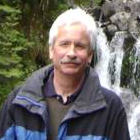Integration of Theoretical, Laboratory, and Field Studies for Efficient Gas Hydrate Assessment and Acquisition
A special issue of Energies (ISSN 1996-1073). This special issue belongs to the section "A: Sustainable Energy".
Deadline for manuscript submissions: closed (15 September 2020) | Viewed by 27951
11th International Methane Hydrate Research and Development Workshop
Special Issue Editors
Interests: methane; isotope geochemistry; carbon cycling; climate change; ocean models
Special Issues, Collections and Topics in MDPI journals
Interests: hydrate fundamentals; thermodynamics; non-equilibrium; statistical physics
Interests: physical properties of gas hydrates; ice physics
Special Issues, Collections and Topics in MDPI journals
Interests: offshore gas hydrate exploration and acquisition
Interests: modeling; numerical simulation; geomechanics
Special Issues, Collections and Topics in MDPI journals
Special Issue Information
Dear Colleagues,
The 12th International Methane Hydrate Research and Development (IMHRD) conference was held in Southwest Petroleum University from 1–3 November 2018. Over 500 delegates from the United States, Canada, Russia, the United Kingdom, Australia, Norway, South Korea, Japan, and other countries attended the conference. The participating representatives included 22 Chinese Academics, 69 foreign experts, and 19 Presidents of overseas universities. It was the first time that so many top experts in methane hydrate research gathered in China. They discussed the development and commercial use of methane hydrate in depth, achieving substantial results. We invite you to contribute to this Special Edition of Energies, where we focus on laboratory experiments, field assessment, and modeling of coastal gas hydrate loading and stability.
Previous workshops were held in India, China, USA, Chile, Canada, Scotland, Norway, New Zealand, and Japan. The basic aim of this workshop, steered by an International Committee, is to provide a platform for deliberation, interaction, and sharing information on leading-edge topics such as natural systems, energy, environmental issues, advancements in production, etc. by an outstanding and diverse group of researchers/scientists from both academia and industries around the world, and to foster an opportunity for international collaboration.
The purpose of this Special Edition is to organize thorough data and information sharing that joins discussions at the workshop with the international gas hydrate research and development community. While this document focuses on the 12th IMHRD, it will include results from the 11th IMHRD that was held during December 2017 in Corpus Christi, Texas. Focus topics of the recent workshop included:
- Laboratory Experimentation: 1) Limitations on experimentation relative to the environment. 2) Mineral/hydrate/Fluid interactions focus on porous non-steady-state conditions.
- Gas Hydrate Related Modelling: Load Predictions, Coastal - Platform Stability, Environmental Safety.
- Gas Hydrate Deep Drilling: Technology, Recent Data.
- Carbon Storage Combined with Gas Hydrate Production: Concepts; Geomechanical Stability, Environmental Safety vs. Impact.
- Initial Site Assessment: Seismic and Geochemical Evaluation, Recent Data (Positive and Negative), Additional Approaches
- Biogeochemical Assessments of Gas Hydrate Loading and Monitoring Environmental Health
We are open to the inclusion of related topics.
11th IMHRD WORKSHOP FINAL REPORT
Dr. Richard CoffinDr. Bjørn Kvamme
Dr. Tsutomu Uchida
Dr. Shouwei Zhou
Dr. Norio Tenma
Guest Editors
Manuscript Submission Information
Manuscripts should be submitted online at www.mdpi.com by registering and logging in to this website. Once you are registered, click here to go to the submission form. Manuscripts can be submitted until the deadline. All submissions that pass pre-check are peer-reviewed. Accepted papers will be published continuously in the journal (as soon as accepted) and will be listed together on the special issue website. Research articles, review articles as well as short communications are invited. For planned papers, a title and short abstract (about 250 words) can be sent to the Editorial Office for assessment.
Submitted manuscripts should not have been published previously, nor be under consideration for publication elsewhere (except conference proceedings papers). All manuscripts are thoroughly refereed through a single-blind peer-review process. A guide for authors and other relevant information for submission of manuscripts is available on the Instructions for Authors page. Energies is an international peer-reviewed open access semimonthly journal published by MDPI.
Please visit the Instructions for Authors page before submitting a manuscript. The Article Processing Charge (APC) for publication in this open access journal is 2600 CHF (Swiss Francs). Submitted papers should be well formatted and use good English. Authors may use MDPI's English editing service prior to publication or during author revisions.
Keywords
- coastal gas hydrate assessment
- laboratory model and data development
- carbon dioxide sequestration
- coastal and platform stability
Benefits of Publishing in a Special Issue
- Ease of navigation: Grouping papers by topic helps scholars navigate broad scope journals more efficiently.
- Greater discoverability: Special Issues support the reach and impact of scientific research. Articles in Special Issues are more discoverable and cited more frequently.
- Expansion of research network: Special Issues facilitate connections among authors, fostering scientific collaborations.
- External promotion: Articles in Special Issues are often promoted through the journal's social media, increasing their visibility.
- Reprint: MDPI Books provides the opportunity to republish successful Special Issues in book format, both online and in print.
Further information on MDPI's Special Issue policies can be found here.






